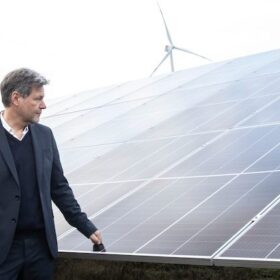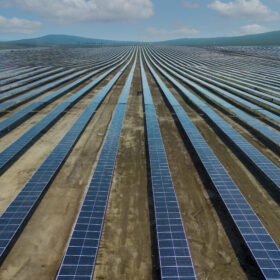The Hydrogen Stream: Canada, Italy announce funds for hydrogen trade, infrastructure
Canada and Italy announced funds for hydrogen projects. Meanwhile, a team of researchers explained that Australia should ship hydrogen to Japan by 2030 via methyl cyclohexane (MCH) or liquid ammonia (LNH3), not completely rejecting the option of liquid hydrogen (LH2).
H-TEC to start 1 GW capacity production of PEM electrolyzers in September
H-TEC will be able to produce more than 1 GW of electrolyzers starting next year. “We installed the first production lines and will have our official opening in September this year,” Maximilian Kuhnert, sales manager at H-TEC, told pv magazine.
The Hydrogen Stream: thyssenkrupp nucera sees uncertainties in the medium term
Thyssenkrupp nucera warns of possible delays in hydrogen projects, with consequences for producers. Meanwhile, Shanghai Electric seems bullish about the market and its ability to drive costs down.
The Hydrogen Stream: German government adopts import strategy to create investment security
A new hydrogen import strategy is expected to make Germany better prepared for increasing demand in the medium and long term. The Netherlands, meanwhile, saw its hydrogen market grow considerably across supply and demand between October and April.
Comal plans 500 MW solar module factory in Italy
Comal says it has acquired an industrial building near L’Aquila in central Italy for a 500 MW solar module factory. Production is scheduled to start in 2025.
The Hydrogen Stream: New way to make hydrogen, fertilizer from ammonia
German researchers have developed a new way to liberate hydrogen from ammonia, while a new MIT study shows the need for stringent emissions regulations on ammonia combustion for maritime mobility.
The Hydrogen Stream: Europe could miss 2030 hydrogen targets
The European Court of Auditors says the European Union will likely fail to achieve its 2030 renewable hydrogen goals, while the US Department of Energy and Arches have agreed to build a $12.6 billion hydrogen hub in California.
The Hydrogen Stream: Germany grants €4.6 billion to 23 green H2 projects
The German government has granted €4.6 billion ($5 billion) for 23 green hydrogen projects, while BP has revealed separate plans to develop a 100 MW green hydrogen installation in Germany.
The Hydrogen Stream: Poland unveils hydrogen strategy
The Polish government has outlined its main objectives for the development of hydrogen, while Tyczka Hydrogen says a damaged compressor from Maximator Hydrogen caused a recent incident at one of its filling stations in Germany.
The Hydrogen Stream: Hydrogen power plants feasible but inefficient, says CATF
The Clean Air Task Force (CATF) says in a new report that dedicated clean hydrogen production and use is often a costly, inefficient decarbonization strategy for the power sector, while American Airlines says it has signed a deal with ZeroAvia for 100 hydrogen-electric engines.







